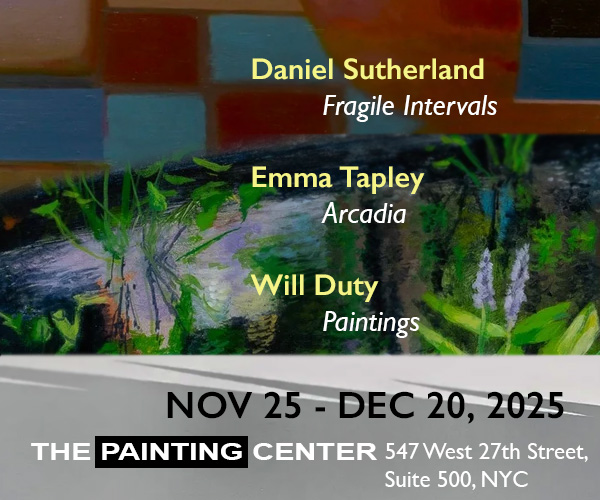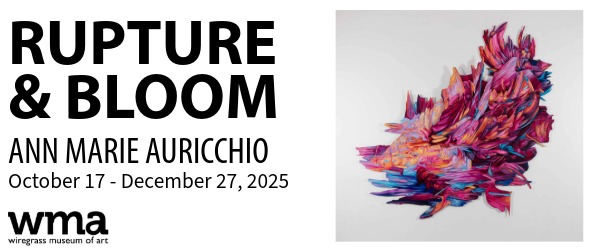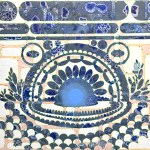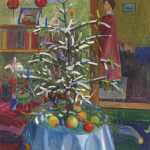Norte Maar director Jason Andrew recently curated “Giacometti and a selection of contemporary drawings,” an exhibition that links contemporary drawing with the work of Alberto Giacometti (1901-1966). In his statement for the show, Andrew writes that Giacometti
holds a special place in the history of 20th Century art. Any encounter with a work by Giacometti whether it is a drawing or painting or sculpture, provides an opportunity to access the strength and sincerity embodying the best art that contributed to the rise of Modernism. With an oeuvre stretching five decades, it is in Giacometti�s most mature work, say from 1947 to 1965, that his most successful and distinctive ability to obscure the boundaries of abstraction and representation are revealed. Giacometti struggled to uncover a personal kind of modernism that measured abstraction against the known, and the representational against subconscious mystery. His very process alludes to a sort of mythology of humanity, which Giacometti expressed so poetically in a short text of 1957, Ma r�alit�: Art, reality and the myth of life became one.
The exhibition, which looks spectacular in Andrew’s light-filled apartment gallery, features drawings by Anthony Browne, Maria Calandra, Kevin Curran, Ryan Michael Ford, Libby Hartle, Francesco Longenecker, Eric Mavko, Thomas Micchelli, Mathew Miller, Andrew Szobody, and an amazing two-sided drawing by Alberto Giacometti himself (pictured above and at bottom), hanging by chain link from a three-dimensional wooden frame. Readers interested in contemporary figure drawing who haven’t seen the show should go ASAP– this is the last weekend.
Here are some images from the show, with excerpts from Andrew’s statements about each artist.
Ryan Michael Ford.
Along with Arp and Picasso, Giacometti was one of the most authentic sculptors of his time.[iv]
From his early Surrealist roots he created a simple vocabulary based on
shapes�half-spheres, crescents, spikes, cones�and animated these forms
into �scenes suggestive of sexual encounters and cruel confrontations.�[v]
These suggestive scenes and their subconscious dreamlike compositions
continued throughout Giacometti�s career. Ryan Michael Ford straddles
the real and the surreal in his paintings and sculptures. It is this
theme that Ford shares with Giacometti.
Francesco Longenecker.
Scholars note the influence
of post-impressionist arranging of color planes to create a pictorial
space in Giacometti�s work, �model[ing] according to Cezannean technique
of building up volume with a patchwork of complementary colors and
highlights.�[vi]
It is this layering and modeling to reinvent space that connects
Francesco Longenecker to Giacometti. �My recent drawings explore the
relationship between architecture and landscape through invented space,�
Longenecker explains,
�These works are inspired by traditional cel
animation and comprised of several layers of transparent and semi
transparent surfaces. This allows for three different drawings to be
placed directly on top of one another and viewed at the same time. The
imagery of the preceding surface becomes the foundation for the mark
making on the next. Where cel animation uses physical layering to
separate the background from subject, I am using the layers to connect
the background and subject creating a type of spatial netting that
continually shifts from deep to shallow space, linking both setting and
subject and conveying a sense of immediacy and discovery.
Thomas Micchelli.
Giacometti famously said,
�It�s the totality of this life that I want to reproduce in everything I
do.� This totality is �the closest verbalization we can propose for the
mythical dimension of Giacometti�s compositional ideas.�[vii]
With the figure as his primary vehicle Giacometti sought out this
totality. The work of Thomas Micchelli, with the figure at the center,
seems to be on the same journey.
�Alberto Giacometti is a key
figure in the development of my work,� states Micchelli, �I vividly
recall discovering The Palace at 4 a.m. at the Museum of Modern Art when
I was a teenager, and I regularly returned to his art � the early
Surrealist phase as much as the signature Existentialist period � as I
looked for ways to filter the influence of Modernist European figuration
through the materials-based, formalist concerns of American postwar
abstraction. The drawings in the series Facing AG (2012)
approach specific Giacometti sculptures through a set of inversions:
male figures become female and vice versa; the heavily reworked contours
characterizing the late drawings and paintings are distilled to single,
precise lines; the obsessive modeling that all but obliterates facial
and bodily detail in the Existentialist sculpture is replaced by
purposefully individuated features. I regard the series as a kind of
leave-taking, a conflict without resolution.�
Maria Louisa Calandra
Giacometti was famous for
making drawings of the interior of his studio. These drawings became
visual inventories and today stand as details of time and place. Finding
inspiration to sketch what�s readily on hand and very often simply
drawing the objects and the space of a studio connects Maria Louisa
Calandra to Giacometti.
�My current ongoing project consists of
visiting artists in their studio,� she explains, �While there, I draw
their space and talk with them about their artwork and practice. We talk
about their life as an artist. My visits become an intimate look inside
the artist�s space, both literally and philosophically. My drawings
become a study of detail; from the rag that slips under the corner of a
painter�s table to a hidden collaged element found on the multi-layered
surface of a canvas. Mostly, I hope to be giving way to new
possibilities in embodying the idea of the artist�s practice.�
Alberto Giacometti
“Reality for me has never been a pretext to make art objects, but art a
necessary means to render to myself a better account of what I see [�]
All that I will be able to make will be only a pale image of what I see
and my success will always be less than my failure or, perhaps, the
success will be equal to my failure. I do not know whether I work in
order to make something, or in order to know why I cannot make what I
would like to make.” �Paris, May 17, 1959
“Giacometti and a selection of contemporary drawings,” curated by Jason Andrew. Norte Maar, Bushwick, Brooklyn, NY. Through February 24.
——-
Subscribe to Two Coats of Paint by email.





























Finding inspiration everywhere